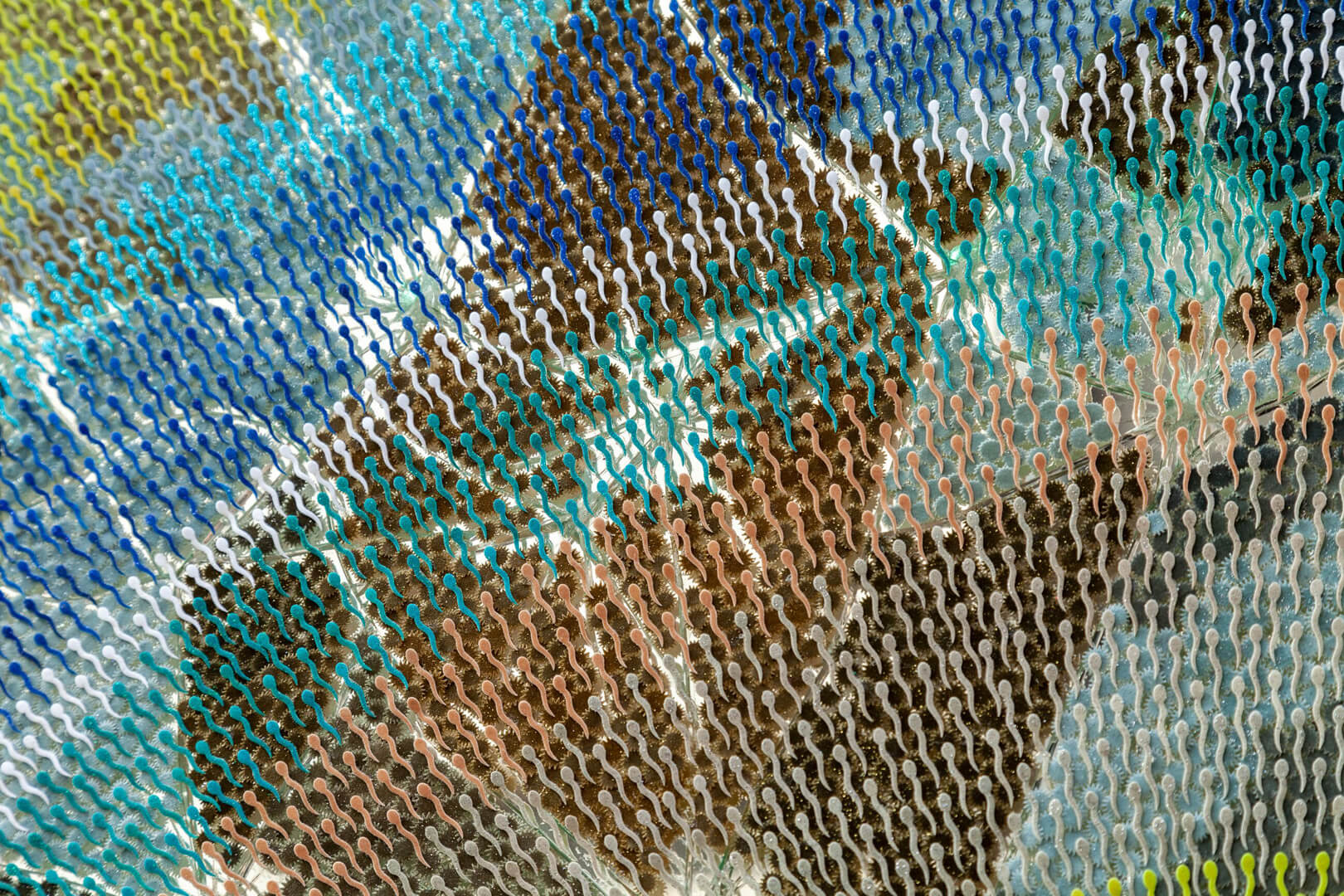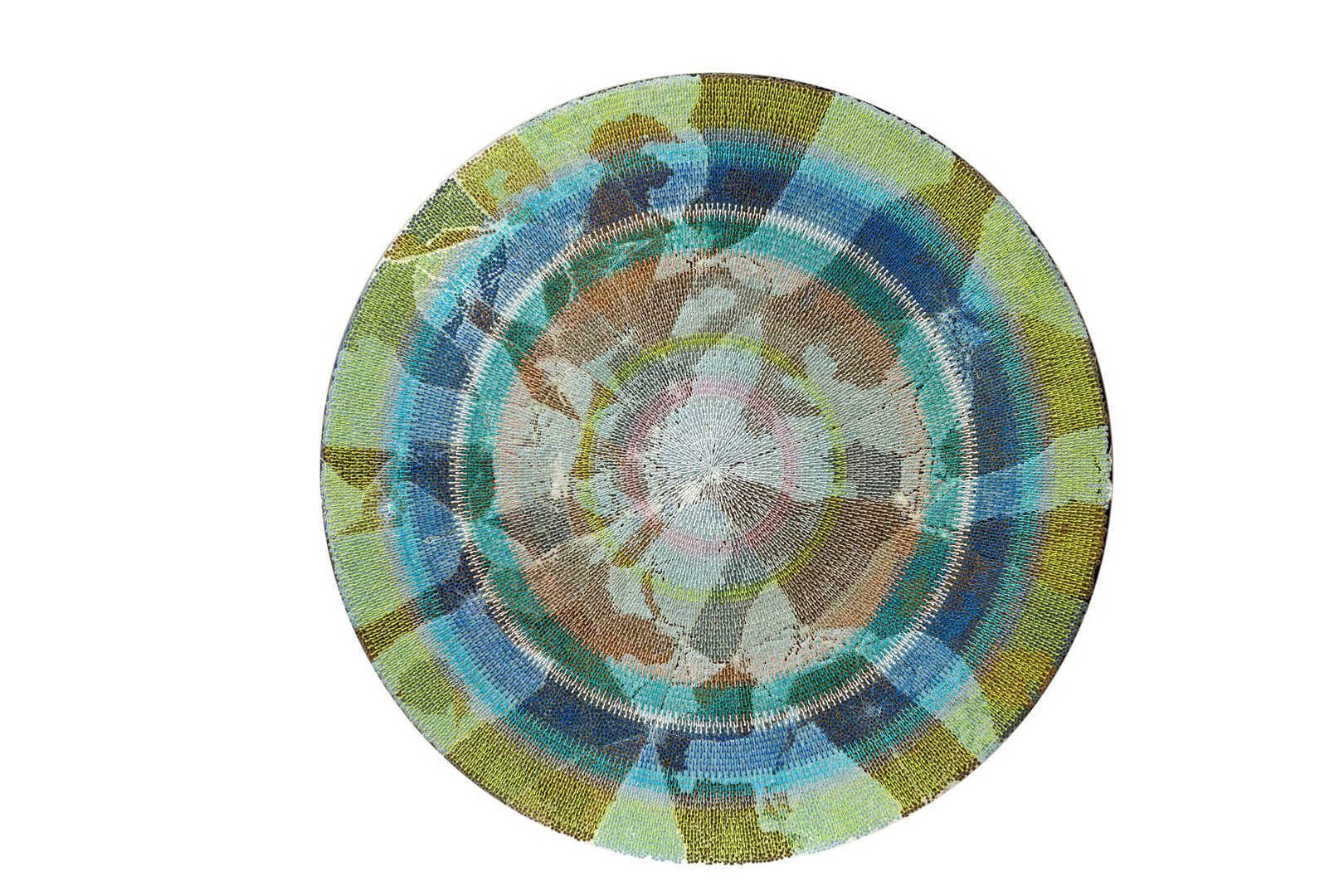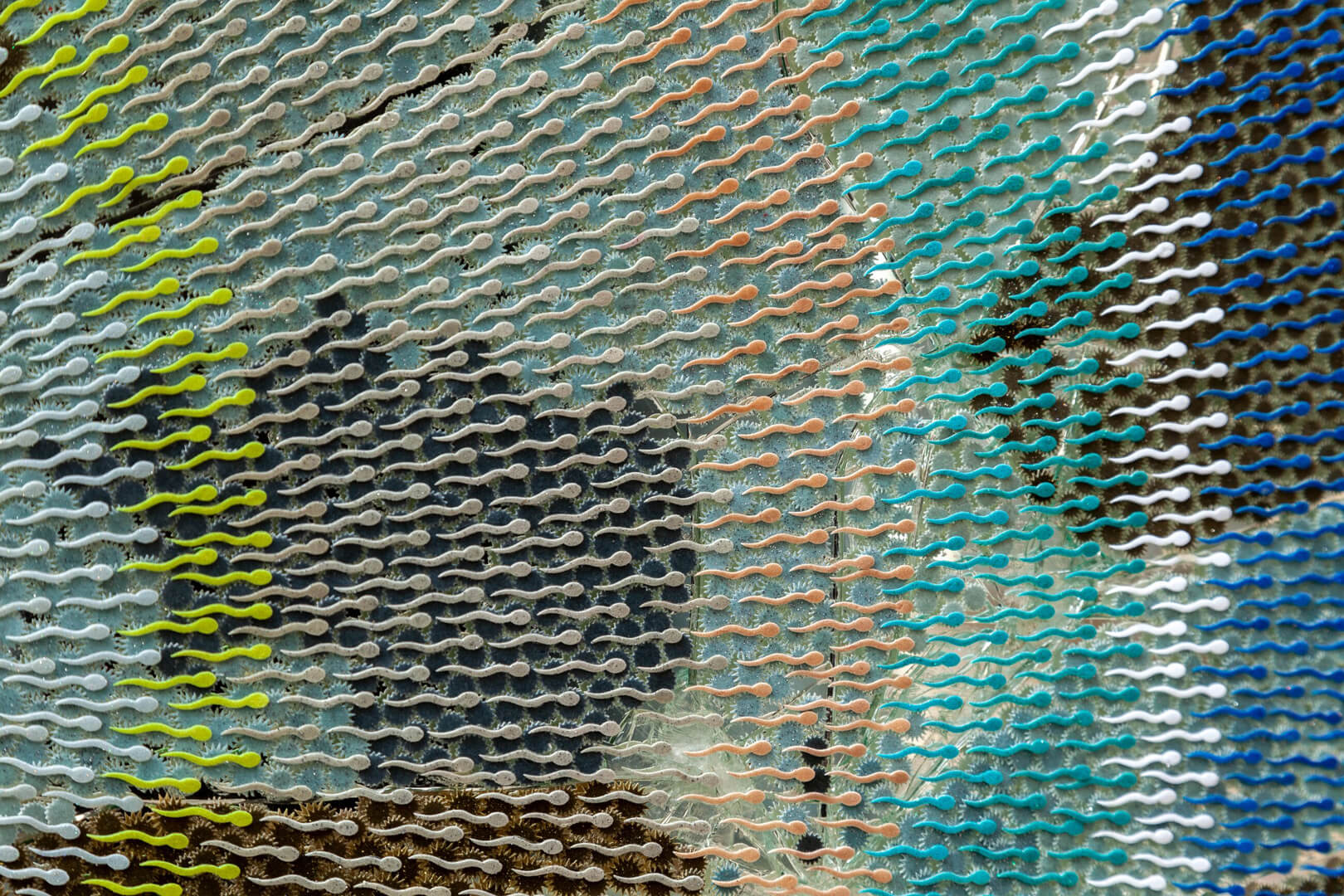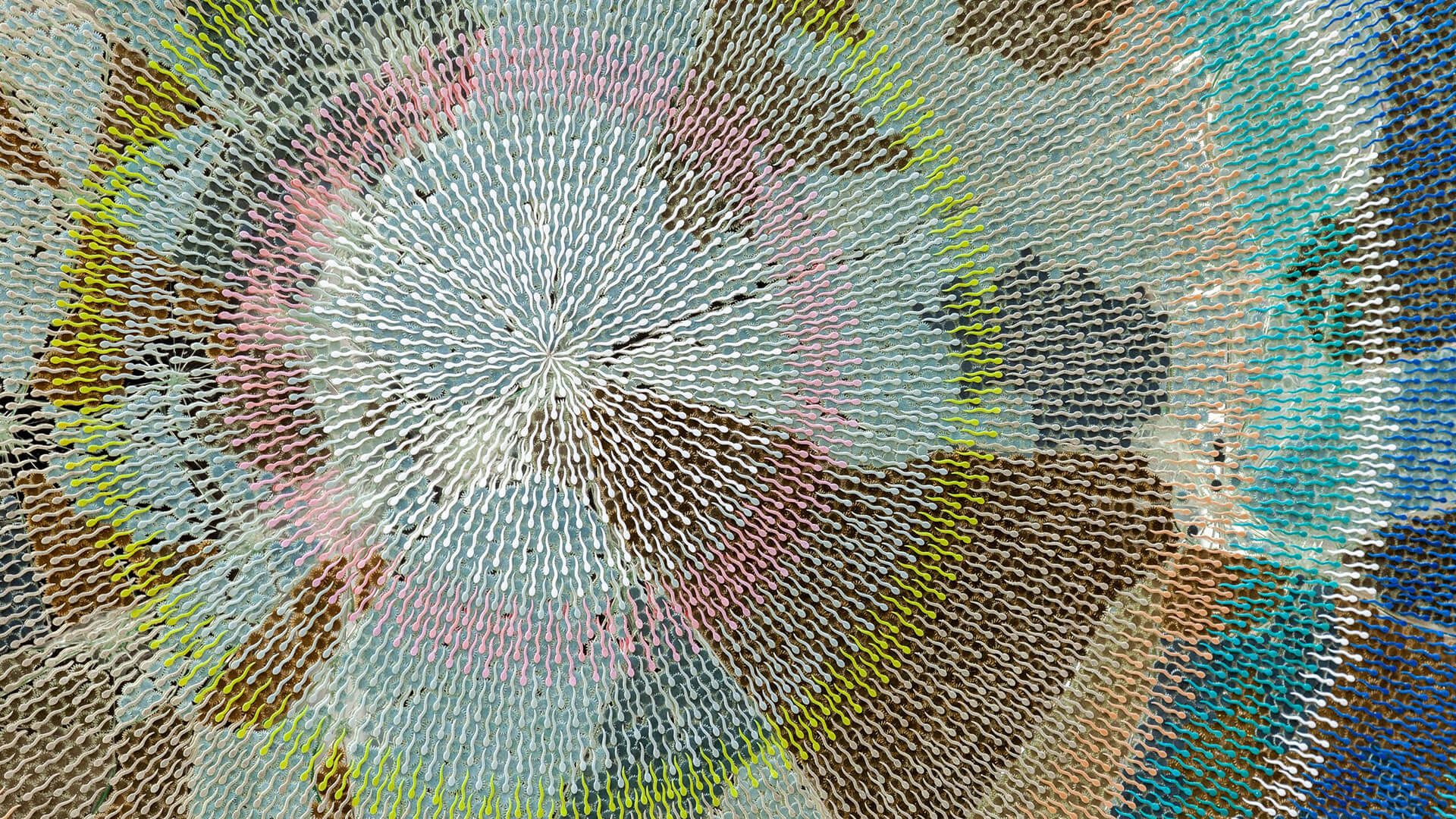
Bharti Kher
Algorithm for hiding
Algorithm for hiding
2018 Bindis, mirror 152.4 cm / 60 in (diameter, framed)
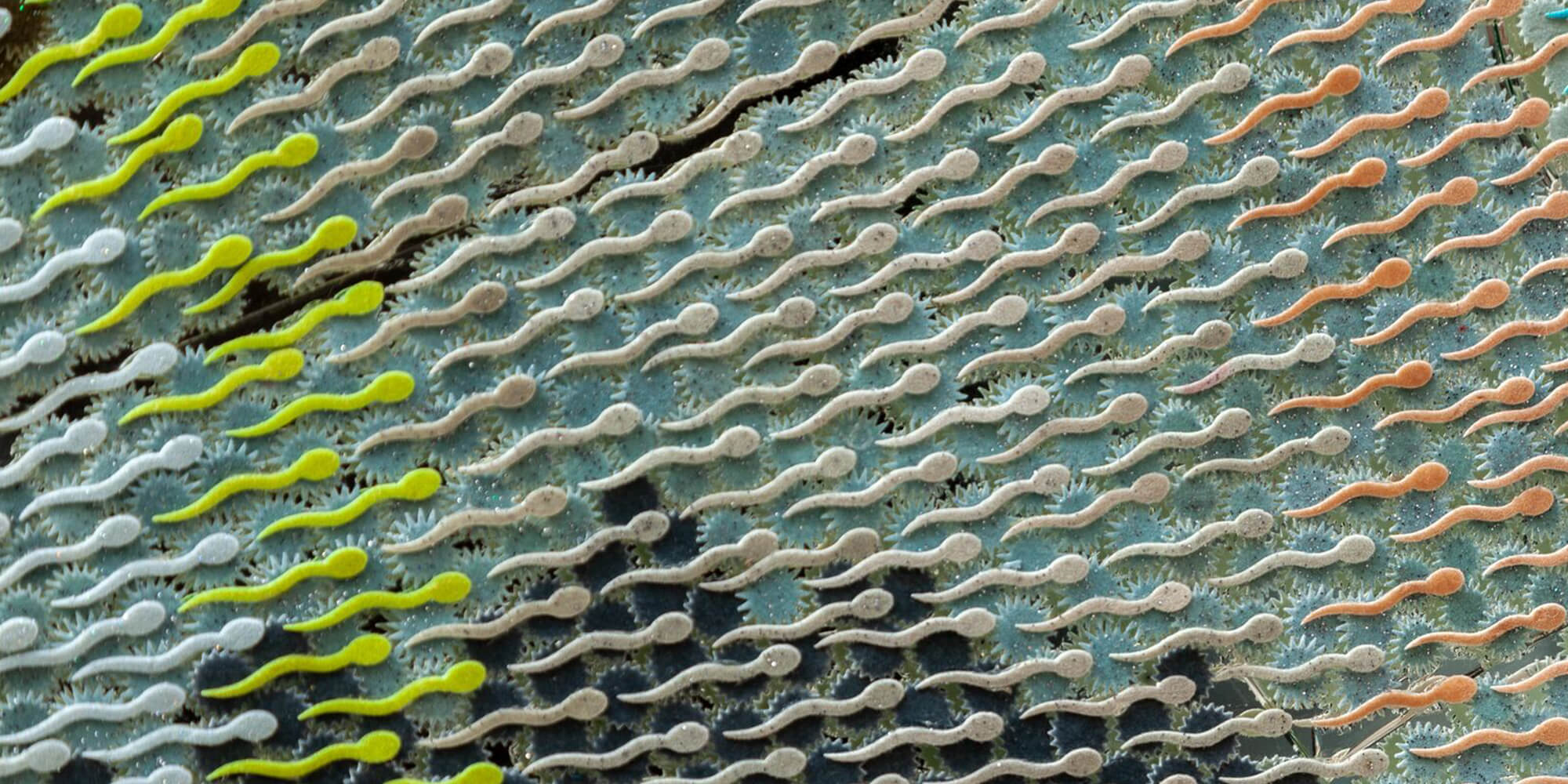
In the process of transforming found objects, and continually experimenting with materials, Bharti Kher layers references: to the mythological and scientific, secular and ritualistic, physical and psychological. At the centre of all of her works is the abstraction of shape and confluence of time in a provocative meeting of materials. ‘Algorithm for hiding’ (2018) is a mesmerizing example of Kher’s hallmark bindi-covered mirrors. A complex, gendered symbol of fertility, marital status, and beauty, the contemporary stick-on bindi is a popular cosmetic device available in different shapes and colors, which first appeared in Kher’s work in 1995.
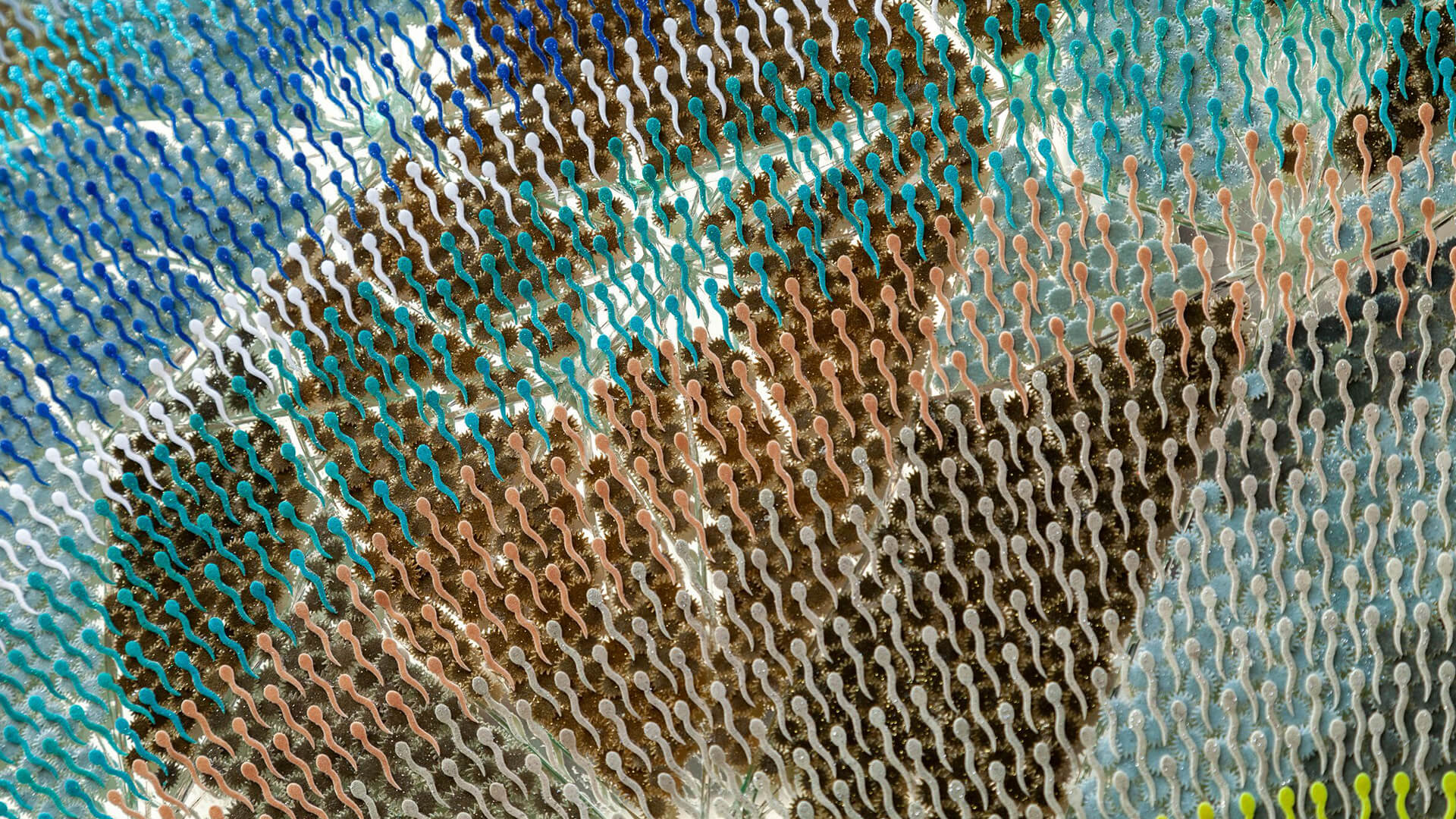
Kher uses these ‘ready-mades’ as a formal device, affixing the dots – both traditionally round, as well as sperm-shaped bindi – to furniture, walls, sculptures, and most famously to broken mirrors. An integral part of the artist’s œuvre, Kher also draws on the symbolism of bindis as physical representations of a person’s third, inner, eye. Kher recalled the early inspiration for her works in an interview in 2013: ‘When I would go into some bathrooms, I would see all of these bindis stuck on the mirror, “Oh, that’s great, being with this woman all day and that’s her eye on the world.” … With the new works you start to see yourself and a double seeing: the eye, my eye, their eye, your eye, this eye. There’s this constant to and for, of just looking.’

Bharti Kher
Born in London in 1969, Bharti Kher’s art gives form to quotidian life and its daily rituals in a way that reassesses and transforms their meaning to yield an air of magical realism. Now living in New Delhi, India, her use of found objects is informed by her own position as an artist located between geographic and social milieus. Her way of working is exploratory: surveying, looking, collecting, and transforming, as she repositions the viewer’s relationship with the object and initiates a dialogue between metaphysical and material pursuits.
